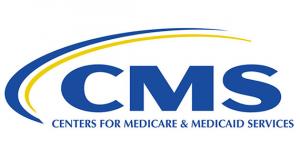CMS releases Feb. 2023 enrollment data: Medicaid/CHIP enrollment reached 93.4M (likely over 95M as of March w/U.S. territories)

via the Centers for Medicare & Medicaid Services (CMS):
In February 2023, 93,373,794 individuals were enrolled in Medicaid and CHIP.
- 86,174,094 individuals were enrolled in Medicaid in January 2023, an increase of 291,095 individuals from January 2023.
- 7,199,700 individuals were enrolled in CHIP in February 2023, an increase of 111,838 individuals from January 2023.
- Since February 2020, enrollment in Medicaid and CHIP has increased by 22,723,554 individuals (32.2%).
- Medicaid enrollment has increased by 22,369,004 individuals (35.1%).
- CHIP enrollment has increased by 354,550 individuals (5.2%).
The Medicaid enrollment increases are likely driven by COVID-19 and the continuous enrollment condition in the Families First Coronavirus Response Act (FFCRA).
- In February 2023, 2,141,735 applications for Medicaid and CHIP were submitted directly to states.
- The number of applications submitted directly to states was 14 percent lower in February 2023 compared to January 2023.
- In February 2023, 155,705 applications were transferred from the Federally Facilitated Marketplace (FFM) to states.
- The number of transferred applications was 55 percent lower in February 2023 compared to January 2023.
As an aside, when I posted my "Psychedelic Donut" breakout of healthcare coverage of the entire U.S. population as of January 2023 in February, I noted:
Assuming Medicaid/CHIP enrollment increased another ~250K or so in March--just prior to the "Medicaid Unwinding" period--that would put the combined Medicaid/CHIP total at around 93.6 million as of the end of March. Since April 1st, however, enrollment has started to drop off via the Unwinding process.
However, there's more: CMS actually has two different reports on Medicaid enrollment: The monthly Medicaid & CHIP Enrollment Trend Snapshot (referenced above) and the Medicaid Budget & Expenditure System (MBES).
Each type of report includes some data that the other doesn't, but each also measures Medicaid enrollment a bit differently:
- Trend Snapshots are more up to date (through January 2023 instead of September 2022)
- The MBES count includes individuals enrolled in limited benefit plans and the Performance Indicator count does not include such individuals.
- The MBES data represents the count of unduplicated individuals enrolled in the state’s Medicaid program at any time during each month in the quarterly reporting period, while the Performance Indicator data captures the count of individuals enrolled on the last day of the month.
- The MBES count only includes individuals whose coverage is funded through Medicaid (title XIX of the Social Security Act), while the published Performance Indicator also includes individuals funded through CHIP (title XXI of the SSA).
- MBES and Performance Indicator data may be derived from different state systems.
- Retroactive state adjustments to MBES or Performance Indicator data may be in progress.
- States have likely generated MBES data and Performance Indicator data from state systems on different dates.
- The other major difference: The MBES reports include Medicaid enrollees in the U.S. territories: American Samoa, Guam, N. Mariana Islands, Puerto Rico and the U.S. Virgin Islands.
Some of these actually cancel each other out: Some are higher in the Trend Snapshot reports while others are higher in the MBES counts. In fact, the September 2022 MBES report puts the grand total of Medicaid/CHIP enrollees nationally at 96.0 million, but again, the different definitions make this a bit fuzzy.
The MBES numbers for U.S. territories only stood at 1.61 million Medicaid enrollees as of September 2022.
When I use the lower "Trend Snapshot" totals for the 50 states + DC and the MBES numbers for the territories only, along with the likely increases in the U.S. states & DC since January, the grand total of Medicaid/CHIP enrollment as of March was likely around 95.2 million nationally.
This was likely the high water mark for Medicaid enrollment historically, and will likely remain that way for quite some time unless there's another pandemic which causes "continuous coverage" to be reinstated, the remaining ten non-expansion states all go ahead and expand the program or some other major policy shift occurs.
How to support my healthcare wonkery:
1. Donate via ActBlue or PayPal
2. Subscribe via Substack.
3. Subscribe via Patreon.



